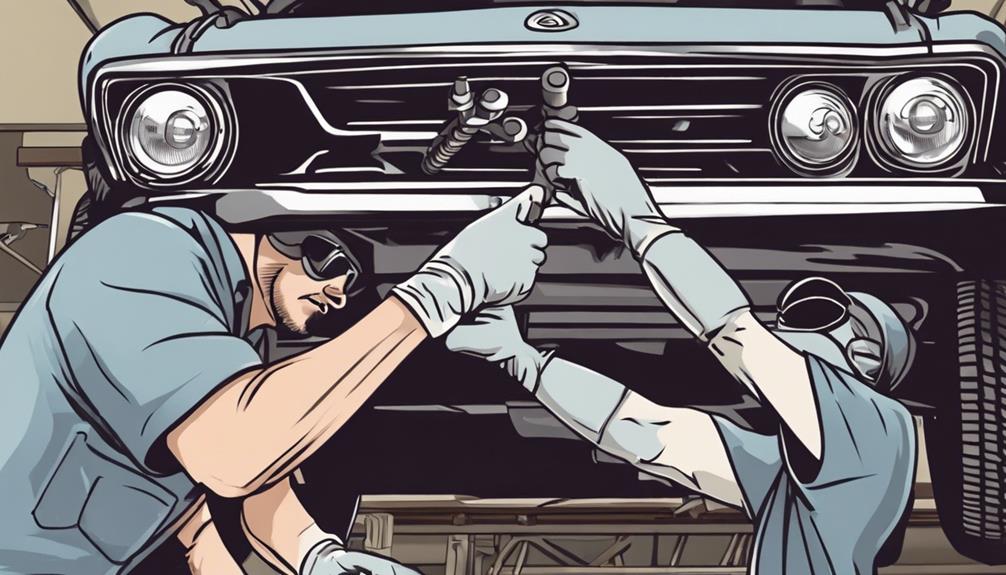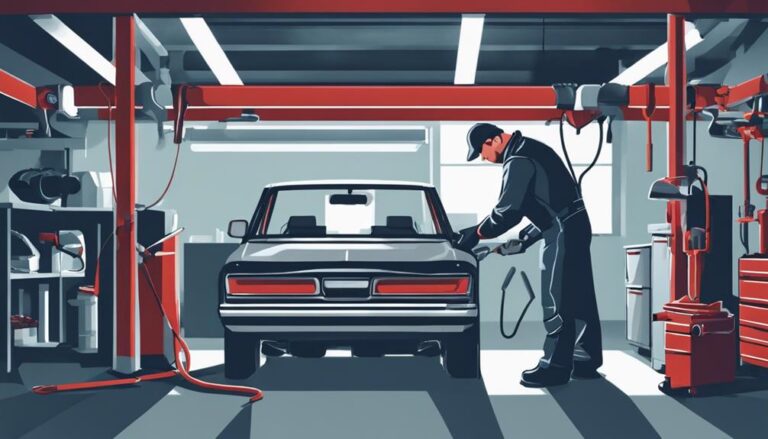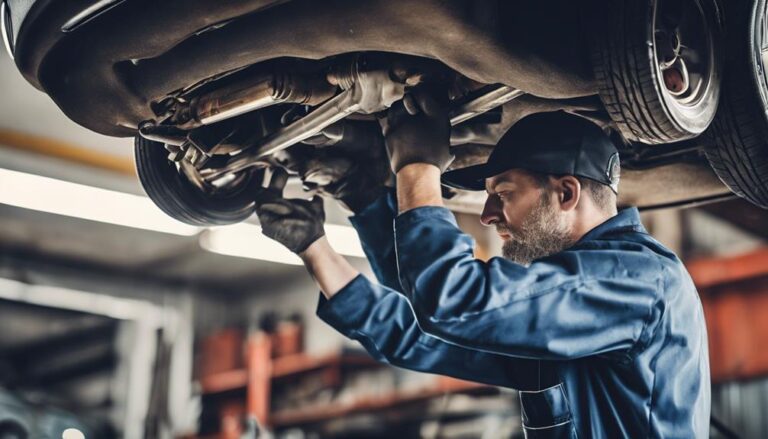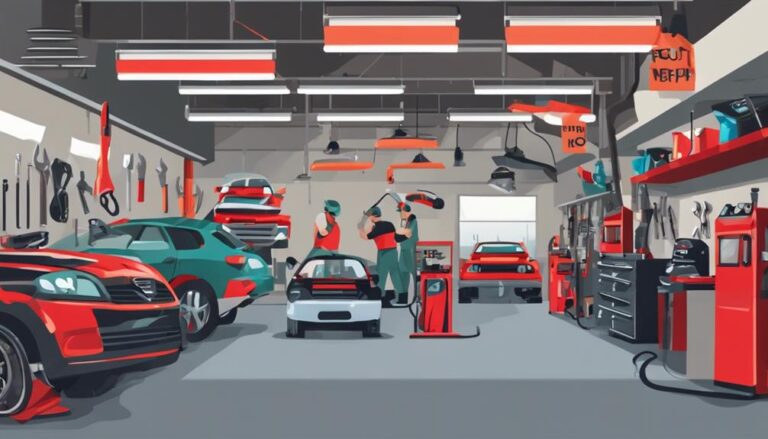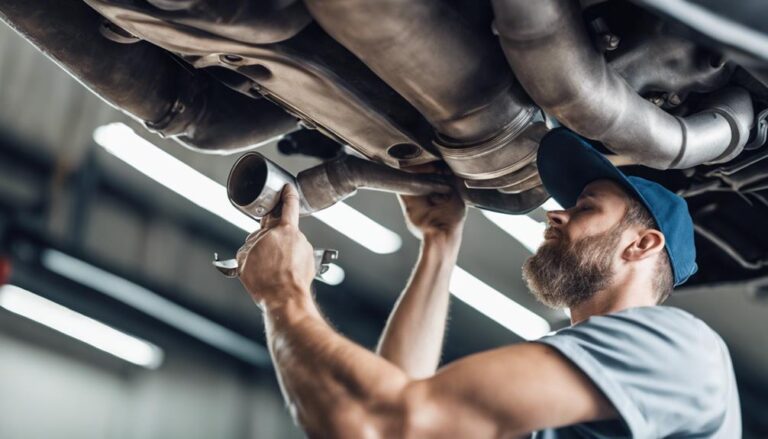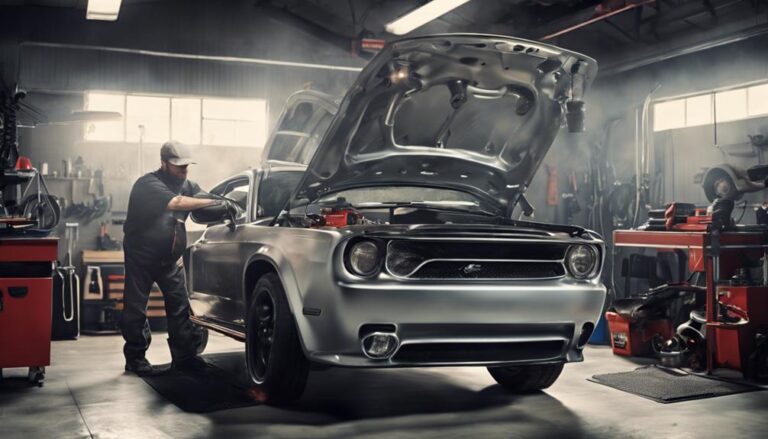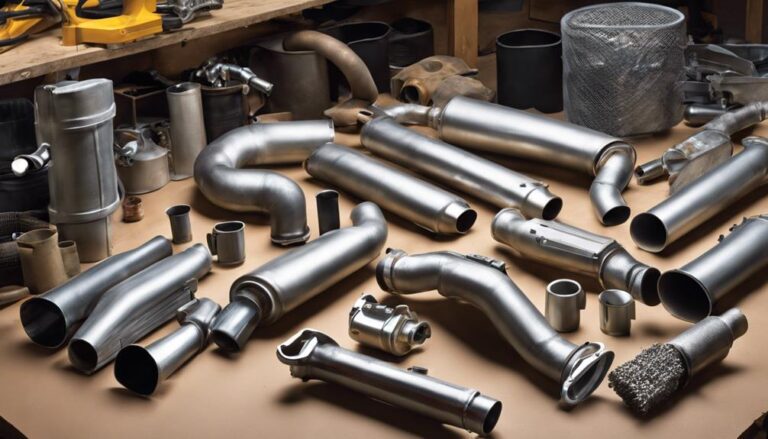5 Essential DIY Exhaust System Repair Tips
Have you ever wondered if you could tackle exhaust system repairs on your own? Understanding a few key tips can make a significant difference in how you approach this task.
By following some essential guidelines, you can effectively address common exhaust issues and potentially save yourself a trip to the mechanic.
Stay tuned to discover how these DIY exhaust system repair tips can empower you to take control of your car maintenance and keep your vehicle running smoothly.
Key Takeaways
- Gather necessary tools and materials for DIY exhaust repair.
- Detect exhaust issues by listening, inspecting, and feeling for abnormalities.
- Repair leaks using proper techniques and monitoring the curing process.
- Secure loose components with appropriate tools and consider welding for a permanent solution.
Necessary Tools and Materials
To efficiently conduct a DIY exhaust repair, gather essential tools such as wheel ramps, metal snips, screwdriver, pliers, and spanners. Organize your tools beforehand for easy access during the repair process. It's crucial to ensure material compatibility when selecting items such as exhaust repair paste and jubilee clips.
When organizing your tools, place them in a designated area to prevent any confusion or delays during the repair. Having everything within reach will make the process smoother and more efficient. Additionally, double-check that the materials you're using, such as the repair paste and jubilee clips, are suitable for your specific exhaust system to guarantee a successful repair.
Identifying Exhaust System Issues
Inspect your vehicle's exhaust system for potential issues by:
- Listening for specific sounds, such as a hissing or popping sound that can indicate leaks.
- Visually examining for rust or damage, including visible signs of rust, holes, or damage along the exhaust pipes and muffler.
- Feeling for air leaks or vibrations by running your hand along the exhaust system to detect any escaping air or unusual vibrations.
- Checking for soot or residue near the exhaust joints, as this can indicate leaks or loose connections.
- Using a flashlight to scrutinize corrosion-prone areas thoroughly.
When troubleshooting exhaust system maintenance, these techniques will help you identify potential issues promptly, enabling you to address them effectively in the repair process.
Repairing Exhaust Leaks
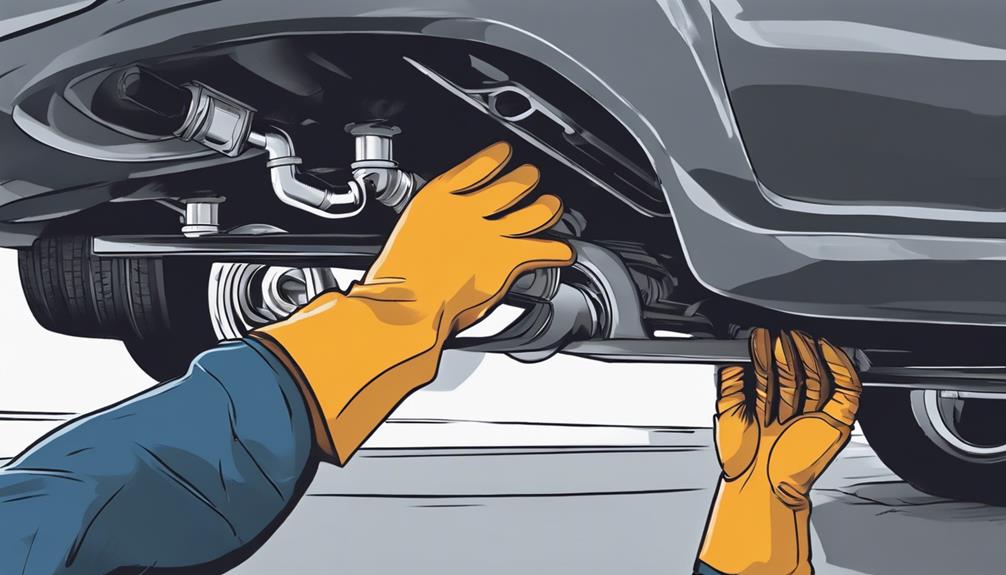
When addressing exhaust leaks, a thorough inspection of the system is crucial to accurately pinpoint the source of the issue. Begin by examining the exhaust system for leaks, cracks, or holes. Once you locate the leak, clean the surrounding area meticulously with a wire brush to ensure a strong bond when applying the repair patch. Remember to wear safety gloves and glasses to protect yourself from sharp edges or debris.
Apply the repair patch with sufficient pressure, ensuring it covers the leak area entirely for a successful repair. Monitor the patch to guarantee proper curing before driving the vehicle to prevent further leaks or issues. By following these steps for patch application and troubleshooting, you can effectively repair exhaust leaks, contributing to leak prevention and overall exhaust maintenance.
Securing Loose Exhaust Components
Before proceeding with securing loose exhaust components, ensure the vehicle is safely supported using sturdy wheel ramps or axle stands. Safety precautions are paramount, so remember to wear eye protection to shield against any debris that may fall during the process.
Begin by checking the exhaust hangers for any signs of wear or damage. If hangers are intact, tighten loose components using jubilee clips as a temporary solution. Apply exhaust repair paste generously to create a strong seal on the joints, ensuring a secure connection. For a more permanent fix, consider welding the loose exhaust components or seek professional help.
After securing the components, snip off any excess or loose ends of clips to prevent future issues. Remember, maintaining a secure exhaust system not only ensures optimal performance but also promotes safety while driving.
Maintaining Exhaust System Health
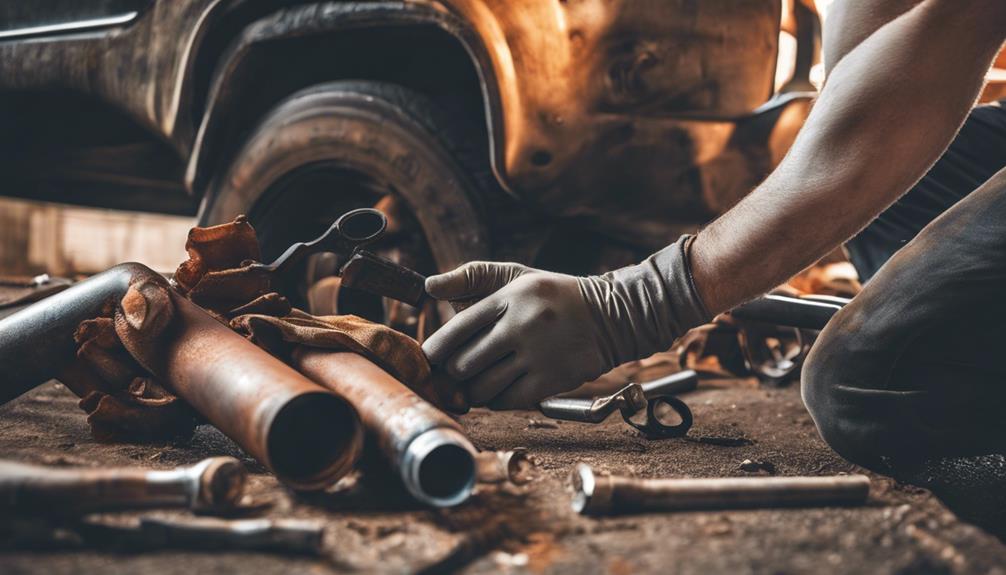
To uphold the longevity and efficiency of your vehicle's exhaust system, regular maintenance is crucial to prevent potential issues. Here are some essential tips for maintaining your exhaust system health:
- Preventative maintenance: Regularly inspect the exhaust system for rust, cracks, or leaks to catch any issues early on and prevent costly repairs down the road.
- Troubleshooting: Address minor issues promptly to avoid them escalating into major problems that may require professional assistance. Keep an eye out for unusual noises, vibrations, or exhaust odors, as these can indicate potential issues with the exhaust system.
- DIY repair, maintenance schedule: Follow the manufacturer's guidelines for maintenance, including periodic checks and servicing to ensure optimal performance. By staying proactive with your maintenance schedule, you can extend the life of your exhaust system and avoid unexpected breakdowns.
Remember to always properly secure and support the vehicle before conducting any maintenance or repairs on the exhaust system to ensure safety.
Frequently Asked Questions
Can I Fix My Exhaust Myself?
You can fix your exhaust yourself. It's manageable with the right tools and knowledge. Take precautions, identify the issue, and stay safe. DIY exhaust system maintenance saves money and time, ideal for minor repairs and upgrades.
What Is the Easiest Way to Fix an Exhaust Leak?
Fixing an exhaust leak can be quick and easy. Consider using exhaust repair paste or tape for temporary solutions. They offer quick patches until you can make long term fixes. Save time and money with these simple DIY methods.
How Do You Fix a Broken Exhaust Pipe Without Welding?
To fix a broken exhaust pipe without welding, use temporary solutions like heat-resistant tape, sealant, or repair patches. These methods can seal leaks effectively. Clamps can also help secure the repair. Choose based on the size and location of the break.
How Do You Connect Two Exhaust Pipes Without Welding?
When connecting two exhaust pipes without welding, opt for a sleeve connector or band clamp for a secure fit. Adhesive tape can also seal the connection effectively. Remember, a tight connection is key to prevent leaks and ensure proper exhaust system function.
Conclusion
In conclusion, mastering DIY exhaust system repair is like being a skilled mechanic sculpting a masterpiece.
With the right tools and materials, identifying issues, sealing leaks, securing components, and maintaining system health becomes second nature.
Stay focused, stay safe, and watch as your car's exhaust system transforms into a work of art on wheels.

